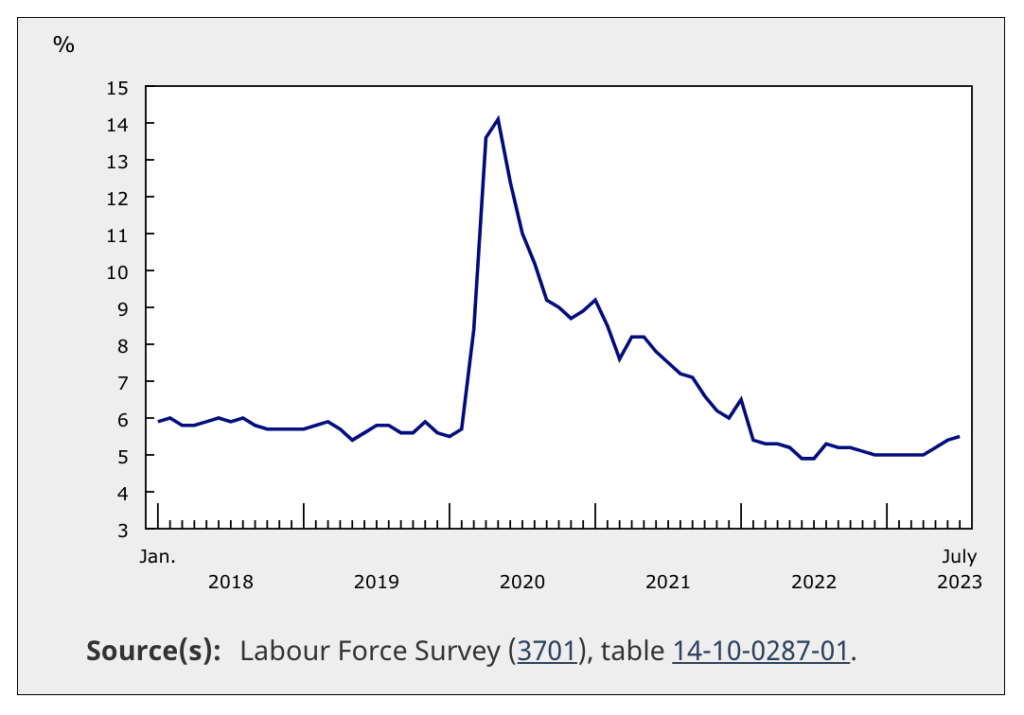
Introduction: The Importance of the Unemployment Rate
The unemployment rate is a critical economic indicator, reflecting the percentage of the labor force that is jobless and actively seeking employment. In Canada, understanding fluctuations in the unemployment rate is essential not only for policymakers but also for businesses and job seekers alike. This statistic helps gauge the health of the economy, informing decisions related to investments, spending, and social programs. As of September 2023, Canada’s unemployment rate stands at 5.5%, reflecting ongoing economic recovery post-pandemic.
Recent Trends and Statistics
In the aftermath of the COVID-19 pandemic, Canada experienced a dramatic shift in its labor market. Following a record high of 13.7% in May 2020, the unemployment rate gradually decreased, supported by government relief programs and the reopening of businesses. The latest data reveals that sectors such as technology, healthcare, and construction are leading job creation, while industries like hospitality and retail are still struggling to fully recover their pre-pandemic employment rates.
In August 2023, Statistics Canada reported a modest increase in employment, adding around 60,000 jobs, which is a positive sign for economic recovery. Notably, the unemployment rate among youth aged 15-24 remains a pressing concern, at 11.4%, highlighting the need for targeted employment initiatives for this demographic. Additionally, the ongoing labor shortage in skilled trades prompted discussions around immigration policies to fill the gaps in the labor market.
Provincial and Regional Insights
The unemployment rate varies significantly across provinces. Alberta and British Columbia have reported lower unemployment rates, approximately 4.9% and 5.1% respectively, attributed to strong demand in the resource and tech sectors. In contrast, Atlantic provinces like Newfoundland and Labrador remain higher, with unemployment rates over 10%, reflecting challenges in transitioning their economies post-pandemic. Such regional disparities underscore the need for localized economic strategies to support job growth.
Conclusion: The Future of Employment in Canada
Looking ahead, economists forecast that as we continue to navigate the post-pandemic landscape, the unemployment rate in Canada may stabilize around 5% over the next year, provided that global economic conditions remain favorable. Continued support for small businesses, workforce development initiatives, and targeted immigration strategies will be crucial in addressing labor shortages and supporting economic recovery. For Canadians, staying informed about these trends will be imperative as they navigate the evolving job market and its implications for personal and financial growth.